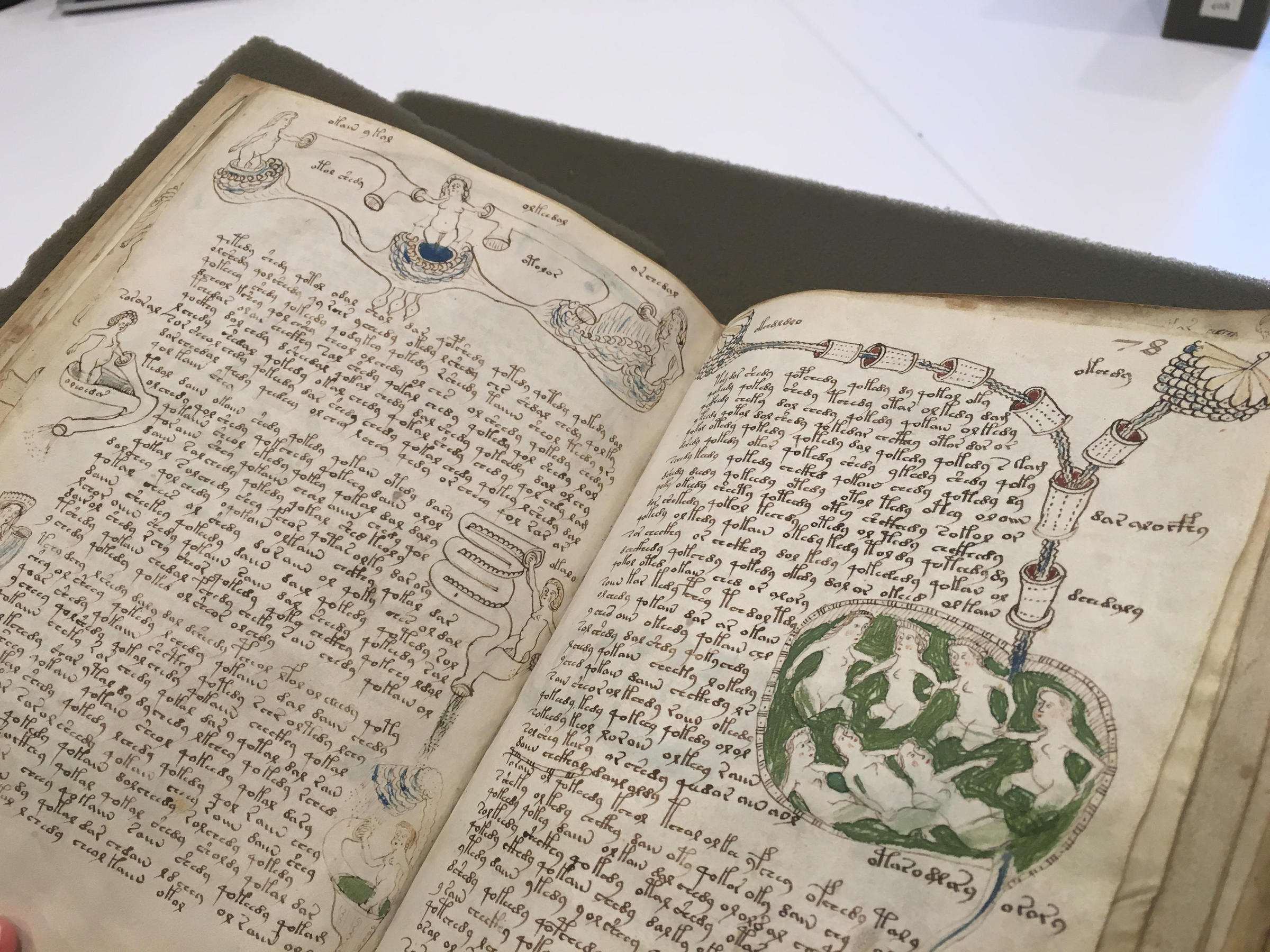

It includes additional drawings of plants, followed by pages of writing in the manuscript’s mysterious language, which has been dubbed “Voynichese.” Some scholars believe that one illustration shows naked women hanging out on a pair of ovaries.Īnd finally, there is the pharmacological section. Illustrations depict naked women bathing in green liquid, naked women being propelled by jets of water, naked women supporting rainbows with their hands. The astrological wheels are dotted with little drawings of nude women, and in the subsequent balneological section, the nude drawings go wild. Then comes the astrological section, which includes foldout drawings of celestial charts that do not seem to match up with any known calendar. It is divided into four sections, each of them very weirdĪs Michael LaPointe explains in the Paris Review, the book begins with an herbal section featuring vibrant drawings of plants-but nobody is quite sure what sort of plants they are supposed to be.

Why has the Voynich proved so baffling, so polarizing over the years? Here are six things to know about the elusive manuscript: Some say the book is a nature encyclopedia. The manuscript has been attributed to everyone from ancient Mexican cultures to Leonardo da Vinci to aliens. The most recent interpretation of the Voynich Manuscript may not have been sound, but it’s certainly not the wackiest theory about the text’s contents and origin. Lisa Fagin Davis, executive director of the Medieval Academy of America, told the Atlantic’s Sarah Zhang that Gibbs’ decoded text “doesn’t result in Latin that makes sense.” But alas, experts and enthusiasts were soon poking holes in Gibbs’ theory. Gibbs claimed to have decoded two lines of the text, and his work was initially met with enthusiasm. The manuscript, Gibbs theorized, is a woman’s health manual, and each character of its elusive language represents medieval Latin abbreviations. And last week, a hullaballoo erupted over a Times Literary Supplementpiece by historical researcher and television writer Nicholas Gibbs, who claimed to have solved the enduring Voynich mystery. The text, written in a language that has yet to be decoded, has confounded scholars, cryptologists and amateur sleuths for centuries. A conference is planned to take place in Hildesheim this August for scholars to discuss the breakthrough.Crumbling medieval texts do not usually make for the subjects of frenzied online debate, with the notable exception of the thoroughly bizarre, persistently impenetrable Voynich Manuscript.

Since 1969, the manuscript has been kept in the Beinecke Rare Book and Manuscript Library at Yale University. It had earlier belonged to the Holy Roman Emperor Rudolf II, and probably John Dee, the infamous astrologer at British Queen Elizabeth I’s court. The Voynich Manuscript came to light in 1912, after Wilfrid Voynich, a rare books dealer in London, bought the manuscript in Italy. Even the name of the manuscript’s author remains a mystery. However, without the ability to read the text, its true content has remained elusive. Scholars have used these illustrations to organise the manuscript’s content into six major sections: botanical, astronomical and astrological, biological, cosmological, pharmaceutical, and recipes. The word-structure leaves only one possible explanation: the manuscript was not composed in an Indo-European language.”Ī page from the Voynich Manuscript Beinecke Rare Book and Manuscript Library at Yale UniversityĪdding to the mystery, the manuscript’s 240 vellum pages bear illustrations of plants, floating heads, signs of the zodiac, fantastic creatures (including dragons), castles, women bathing, and astronomical symbols. “A lot of languages were proposed, such as Latin, Czech, or amongst others Nahuatl (spoken by the Aztecs), just to name a few. “Countless decipherment attempts were made,” Hannig writes in an article in German explaining his methodology.

THE VOYNICH MANUSCRIPT CRACKED
Now, after three years of analysis, the German Egyptologist Rainer Hannig from the Roemer -und Pelizaeus Museum in Hildesheim, believes he has cracked the code to translating the work, and found the manuscript's language to be based on Hebrew. Because of the many mysteries surrounding its content, it has featured in TV shows, books, music, and even video games. Will the Voynich Manuscript, an early 15th century document kept at Yale University and known as the world’s most mysterious book, finally reveal its secrets?Īny attempts to decipher the manuscript's unique text, made up of a mixture of handwritten Latin letters, Arabic numbers, and unknown characters, have so far failed.


 0 kommentar(er)
0 kommentar(er)
